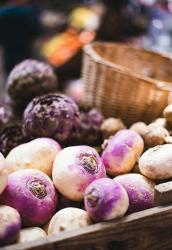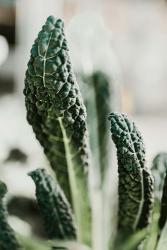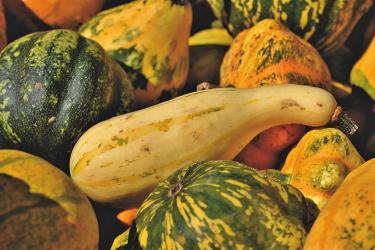At-Home Harvest
Missouri’s climate allows cold season vegetables to continue growing through the end of October. Plots sown in late August have the ability to last through Halloween depending on the weather. If you’re interested in keeping the plants growing through the cold season, greenhouses, cold frames or containers can help extend growing time. Since these vegetables are in season, they’re built to grow in cooler temperatures and don’t do well in excessive heat.
Cool season vegetables include kale, chard, onion, asparagus, carrots, garlic, turnips, butternut squash, beets, pumpkin, cabbage, potatoes and brussel sprouts. Fast-growing vegetables such as radishes or lettuce can be planted in late September to grow through the fall, but other vegetables such as carrots or cabbage need 2-3 months to grow. When it comes to preparing your soil, it’s a good idea to loosen the soil and add in a new layer of compost once all the summer plants have been removed. This allows the new plants a fresh start and encourages them to grow. Make sure the soil is well-drained and deep and that you are prepared to cover the plants during cold winds or early frosts.
Asparagus
While typically considered to be a spring and summer vegetable, asparagus can be planted in the fall during the warmer months of the season. Mulching can also help protect the plant from deep freezes and assist with weed control. The spears should be cut once they’ve grown to around 6-10 inches tall. Once growing has slowed considerably, the plant’s harvest season has ended.
Beets
Beets grow well in the ground or in raised beds or containers. These plants typically need about 1 inch of water per week and it’s recommended that you stick your finger in the soil to determine if it’s dry before watering. Built for cooler weather, these plants are able to tolerate a light frost, but it’s a good idea to harvest them before the freezing temperatures are here to stay.
Kale
When it comes to growing kale, the plant prefers fertile soil to allow it to grow fast. Adding a small layer of compost or fertilizer can help create the ideal environment for kale to grow. They’re typically ready to harvest once the leaves are about as long as your hand and their taste can change depending on the weather. For example, kale harvested after a little frost can have a sweeter flavor.
Squash
Squash thrive under full sun, in fertile soil and with ample moisture. These plants grow best in warmer weather before the first frost of the year and need to be planted a couple of months before they’re ready to harvest. They’re a great in-season vegetable and can be baked, roasted or incorporated into fall soups!
Turnips
Turnips like the sun and cooler temperatures. Best planted in fertile soil, these plants can live in the ground or in containers and require consistent watering. It’s ideal to plant them before the first frost with an additional layer of mulch or compost. Much like kale, the plants can be harvested after a light frost for a sweeter flavor.











